Top Rankings
Haywood County School District ranks among the top 20% of public school district in Tennessee for:
Category
Attribute
Graduation Rate
Highest graduation rate (Top 20%)
Student Attention
Lowest student:teacher ratio (Top 1%)
For the 2025 school year, there is 1 public preschool serving 351 students in Haywood County School District.
Public Preschools in Haywood County School District have a diversity score of 0.49, which is less than the Tennessee public preschool average of 0.61.
Minority enrollment is 79% of the student body (majority Black), which is more than the Tennessee public preschool average of 42% (majority Black).
Overview
This School District
This State (TN)
# Schools
7 Schools
890 Schools
# Students
2,574 Students
417,431 Students
# Teachers
203 Teachers
28,312 Teachers
Student : Teacher Ratio
13:1
13:1
District Rank
Haywood County School District, which is ranked within the bottom 50% of all 147 school districts in Tennessee (based off of combined math and reading proficiency testing data) for the 2021-2022 school year.
The school district's graduation rate of 95% has increased from 89% over five school years.
Overall District Rank
#145 out of 147 school districts
(Bottom 50%)
(Bottom 50%)
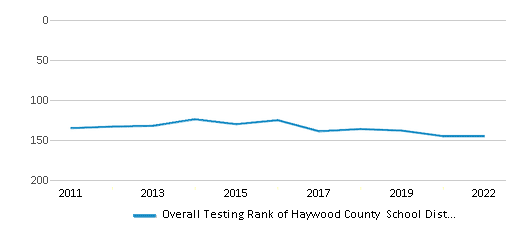
Math Test Scores (% Proficient)
7%
31%

Reading/Language Arts Test Scores (% Proficient)
13%
37%
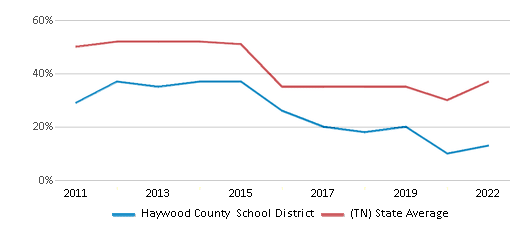
Science Test Scores (% Proficient)
18%
40%
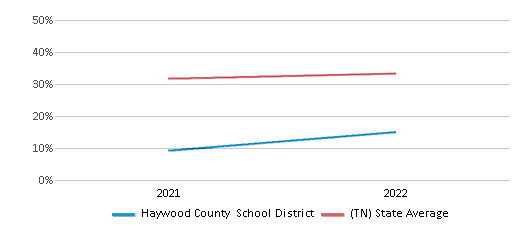
Graduation Rate
≥95%
90%
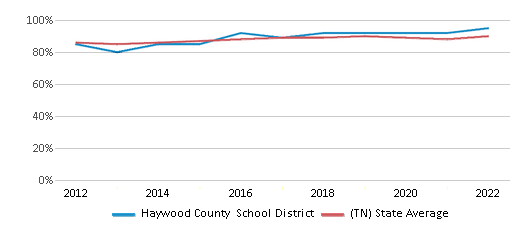
Students by Ethnicity:
Diversity Score
0.50
0.61
# American Indian Students
5 Students
758 Students
% American Indian Students
n/a
n/a
# Asian Students
18 Students
8,008 Students
% Asian Students
1%
2%
# Hispanic Students
192 Students
59,978 Students
% Hispanic Students
7%
14%
# Black Students
1,729 Students
86,069 Students
% Black Students
67%
21%
# White Students
585 Students
241,409 Students
% White Students
23%
58%
# Hawaiian Students
1 Student
542 Students
% Hawaiian Students
n/a
n/a
# Two or more races Students
44 Students
20,664 Students
% of Two or more races Students
2%
5%
Students by Grade:
# Students in PK Grade:
192
33,031
# Students in K Grade:
161
63,063
# Students in 1st Grade:
180
63,815
# Students in 2nd Grade:
187
64,364
# Students in 3rd Grade:
171
58,460
# Students in 4th Grade:
198
57,035
# Students in 5th Grade:
183
51,187
# Students in 6th Grade:
177
8,986
# Students in 7th Grade:
194
7,404
# Students in 8th Grade:
155
7,287
# Students in 9th Grade:
194
701
# Students in 10th Grade:
188
718
# Students in 11th Grade:
212
617
# Students in 12th Grade:
182
763
# Ungraded Students:
-
-
District Revenue and Spending
The revenue/student of $13,014 is higher than the state median of $11,979. The school district revenue/student has grown by 7% over four school years.
The school district's spending/student of $12,934 is higher than the state median of $11,478. The school district spending/student has grown by 7% over four school years.
Total Revenue
$34 MM
$12,104 MM
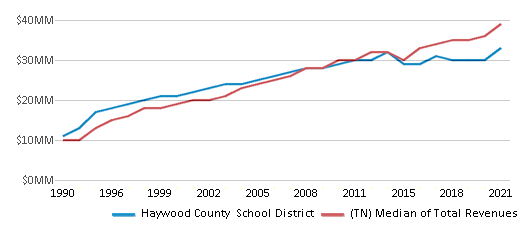
Spending
$33 MM
$11,597 MM
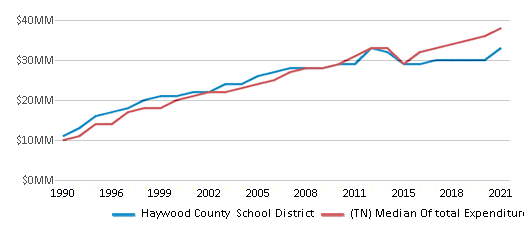
Revenue / Student
$13,014
$11,979
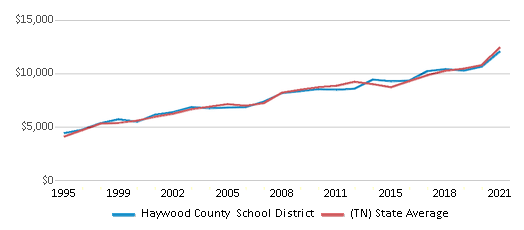
Spending / Student
$12,934
$11,478

Best Haywood County School District Public Preschools (2025)
School
(Math and Reading Proficiency)
(Math and Reading Proficiency)
Location
Grades
Students
Rank: n/an/a
620 West Main
Brownsville, TN 38012
(731) 772-9053
Brownsville, TN 38012
(731) 772-9053
Grades: PK-K
| 351 students
Recent Articles

Sexual Harassment at Age 6: The Tale of a First Grade Suspension
A six-year old in Aurora, Colorado, was suspended after singing an LMFAO song to a little girl in his class and reportedly “shaking his booty.” We look at the case and the sexual harassment problem in public schools today.

How Scaffolding Could Change the Way Your Child Learns
This article explores the concept of instructional scaffolding, a teaching method that enhances learning by breaking down complex tasks into manageable parts. It highlights how scaffolding supports students in developing critical thinking skills and becoming more independent learners. The article discusses the benefits of scaffolding, including improved engagement and reduced anxiety, and provides strategies for its implementation across various educational levels.

February 05, 2025
Understanding the U.S. Department of Education: Structure, Impact, and EvolutionWe explore how the Department of Education shapes American education, from its cabinet-level leadership to its impact on millions of students, written for general audiences seeking clarity on this vital institution.





